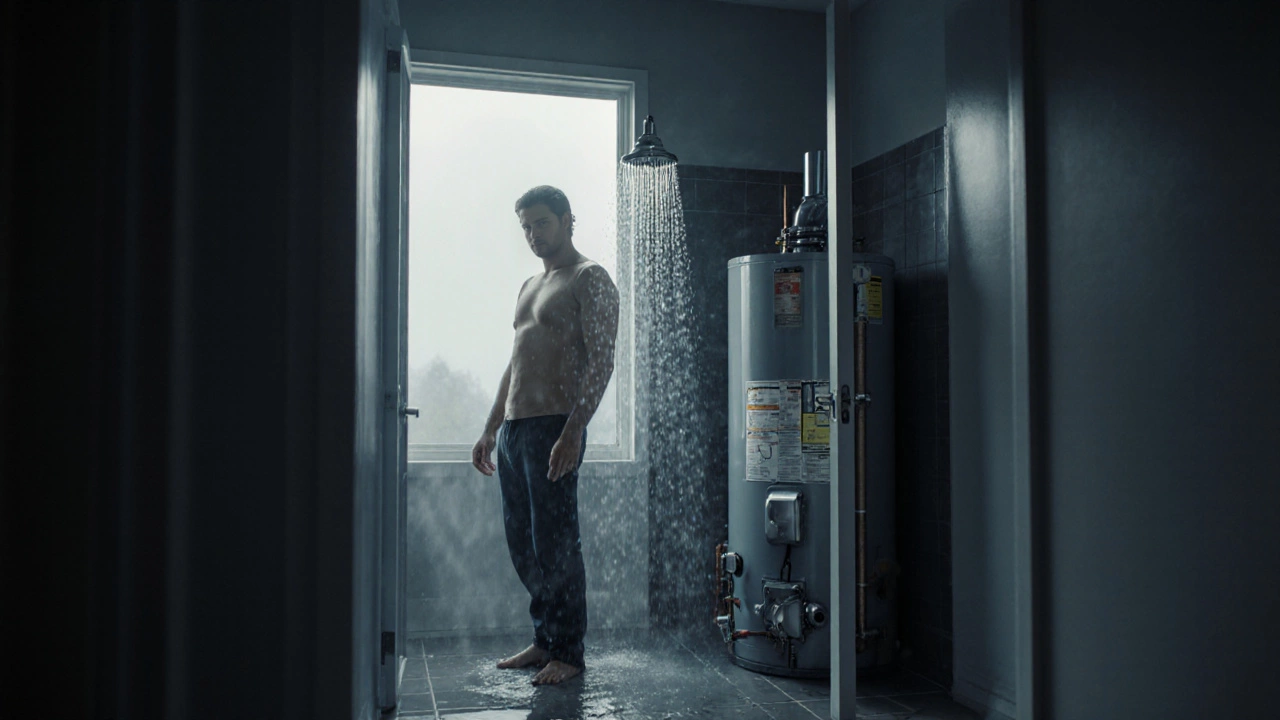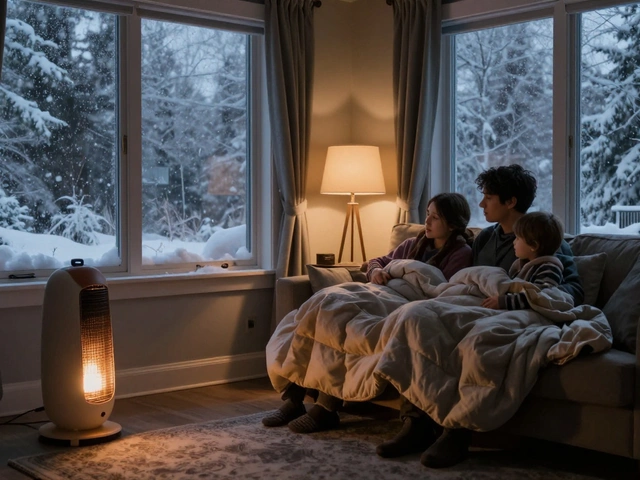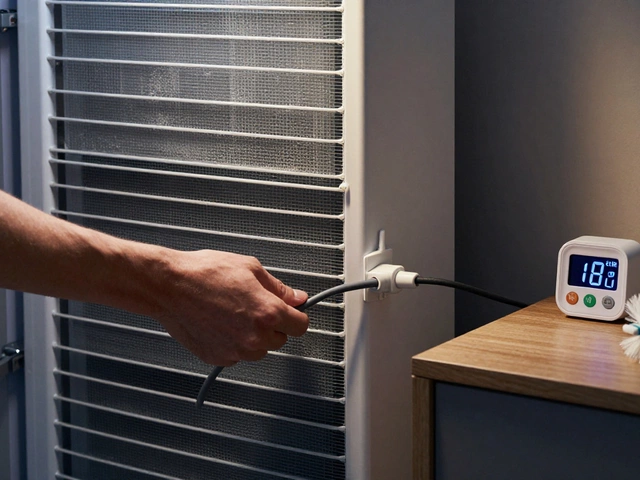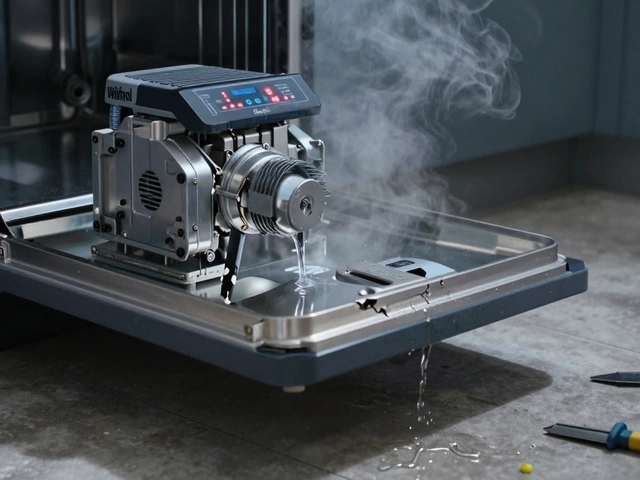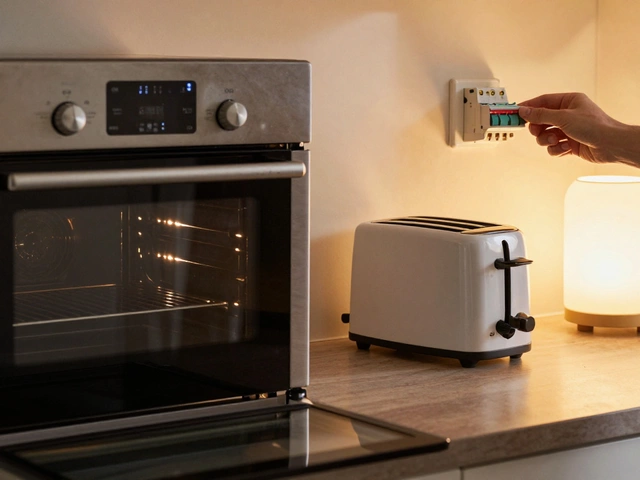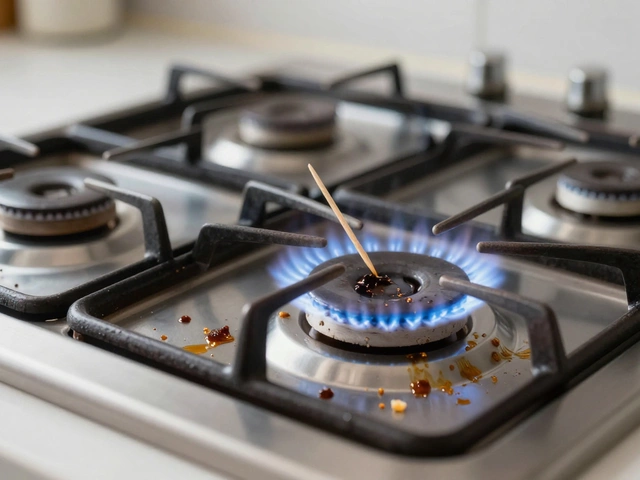You wake up in the morning, turn on the shower, and nothing but cold water comes out. You check the kitchen sink-same thing. Your water heater, which worked fine yesterday, has just stopped working. No warning. No noise. Just cold water. It’s frustrating, especially in Vancouver where even mild days can feel chilly without hot water. But why does this happen? And more importantly, what can you actually do about it?
Thermostat Issues Are the Most Common Culprit
More than half of all sudden water heater failures come down to the thermostat. It’s a small, simple part, but it’s the brain of your system. If it malfunctions, it won’t tell the heating elements to turn on-even if the power is flowing and the tank is full.
Electric water heaters have two thermostats: one for the upper element and one for the lower. If the upper thermostat fails, you won’t get any hot water at all. If the lower one goes, you might get a little warmth at first, but it’ll run out fast. Gas water heaters have a single thermostat, but it’s connected to a pilot light or electronic ignition that can also fail.
You can test this yourself. Turn off the power at the breaker. Remove the access panel on the side of the tank. You’ll see two round dials (for electric) or a control knob (for gas). Try turning the temperature up a few degrees. Wait 15 minutes. Turn the power back on. If you still get no hot water, the thermostat is likely dead. Replacing it costs under $50 and takes about an hour if you’re comfortable with basic tools.
Heating Elements Burn Out
If your water heater is electric, it uses one or two heating elements to warm the water. These are metal rods inside the tank that get red-hot when electricity passes through them. Over time, they wear out. Hard water accelerates this. Mineral buildup coats the elements, forcing them to work harder and overheat until they break.
Signs of a bad element: lukewarm water that doesn’t last, or no hot water at all. You can test them with a multimeter. Set it to ohms. Touch the probes to the element’s terminals. If you get no reading or infinite resistance, the element is dead. Replacement elements cost $20-$40. Just make sure to drain the tank first-water will spill out if you don’t.
Pro tip: If one element fails, the other is likely close behind. Most people replace both at the same time to avoid another call in a few months.
Power Supply Problems
It sounds obvious, but a lot of people forget to check the basics. Your water heater runs on electricity-or gas. If the power’s off, it won’t work. Start at the circuit breaker. Is it tripped? Reset it. If it trips again right away, there’s a short in the wiring or a failing component drawing too much current.
For gas heaters, check if the pilot light is out. Some newer models use electronic ignition instead, so you won’t see a flame. If you smell gas, turn off the gas valve immediately and call a professional. Never try to relight a gas heater yourself unless you’re sure there’s no leak.
Also check the disconnect switch near the water heater. It’s a small box with a toggle switch, often mounted on the wall. People accidentally turn it off when cleaning or doing other work nearby.
Thermal Expansion and Pressure Buildup
When water heats up, it expands. In a closed system-like most modern homes with backflow preventers or pressure-reducing valves-that extra volume has nowhere to go. It builds pressure inside the tank. Over time, that stress can crack the tank lining or blow out the temperature and pressure relief valve.
If you’ve noticed water leaking from the pipe sticking out of the top of your heater, that’s the relief valve doing its job. But if it’s leaking constantly, or you hear loud banging noises when the heater kicks on, you’ve got a pressure problem. Install a thermal expansion tank. It’s a small, cheap device (under $100) that absorbs the extra pressure. Many building codes now require it in new installations.
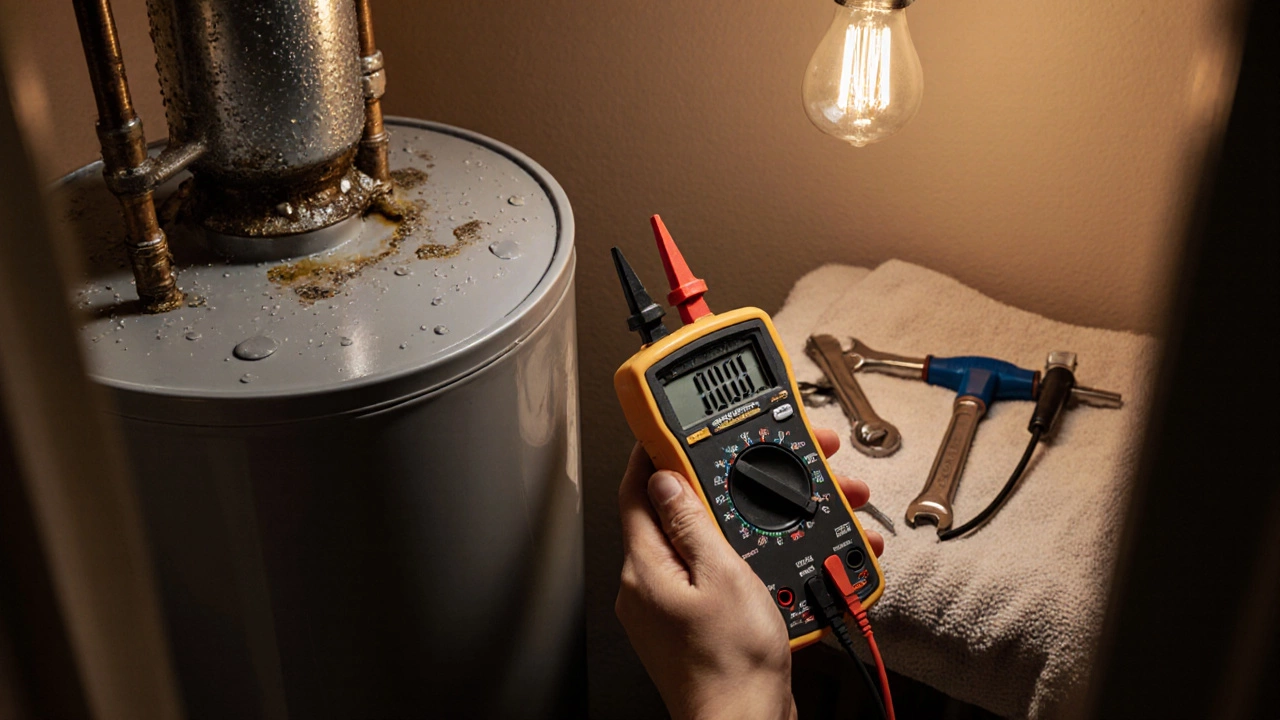
Corrosion and Tank Failure
Your water heater tank is made of steel with a glass lining and a sacrificial anode rod that protects it from rust. The anode rod slowly eats away to save the tank. Once it’s gone, the tank starts corroding from the inside. That’s why older heaters (10+ years) suddenly leak or stop working.
Check your anode rod. Drain a few gallons from the tank, then use a socket wrench to pull out the rod. If it’s thinner than a pencil or covered in hard calcium chunks, it’s spent. Replacing it every 3-5 years can double your heater’s life. But if the tank itself is rusted-look for brown water, rust stains at the base, or a wet floor under the unit-it’s done. No repair will fix it. You need a new heater.
Gas Line or Burner Issues (Gas Heaters Only)
If you have a gas water heater and no hot water, the problem might be with the gas supply or the burner assembly. First, make sure the gas valve is fully open. It should be parallel to the pipe. If it’s turned perpendicular, the gas is shut off.
Next, check the burner. Remove the access panel at the bottom. Look for soot, debris, or a flame that’s yellow instead of blue. A yellow flame means incomplete combustion, which can be dangerous. It’s often caused by a dirty burner or blocked vent. Clean it with a brush or call a technician. Don’t try to adjust the gas pressure yourself.
Also, make sure the flue is clear. Birds, leaves, or even spider webs can block the exhaust vent. If the heater shuts off because it can’t vent properly, that’s a safety feature kicking in.
What to Do When You’re Not Sure
Not every problem is DIY. If you’ve checked the thermostat, elements, power, and pressure-and you’re still stuck-it’s time to call a pro. Some signs you shouldn’t ignore:
- Water leaking from the tank itself (not the valves)
- Smell of gas
- Strange noises like popping, rumbling, or hissing
- Water that smells like rotten eggs (sulfur bacteria)
- The heater is over 10 years old and failing
These aren’t fixes you should risk. A bad water heater can flood your basement, cause a fire, or release toxic fumes. Licensed plumbers have the tools and training to diagnose and fix it safely. In Vancouver, many offer same-day service for emergency hot water issues.
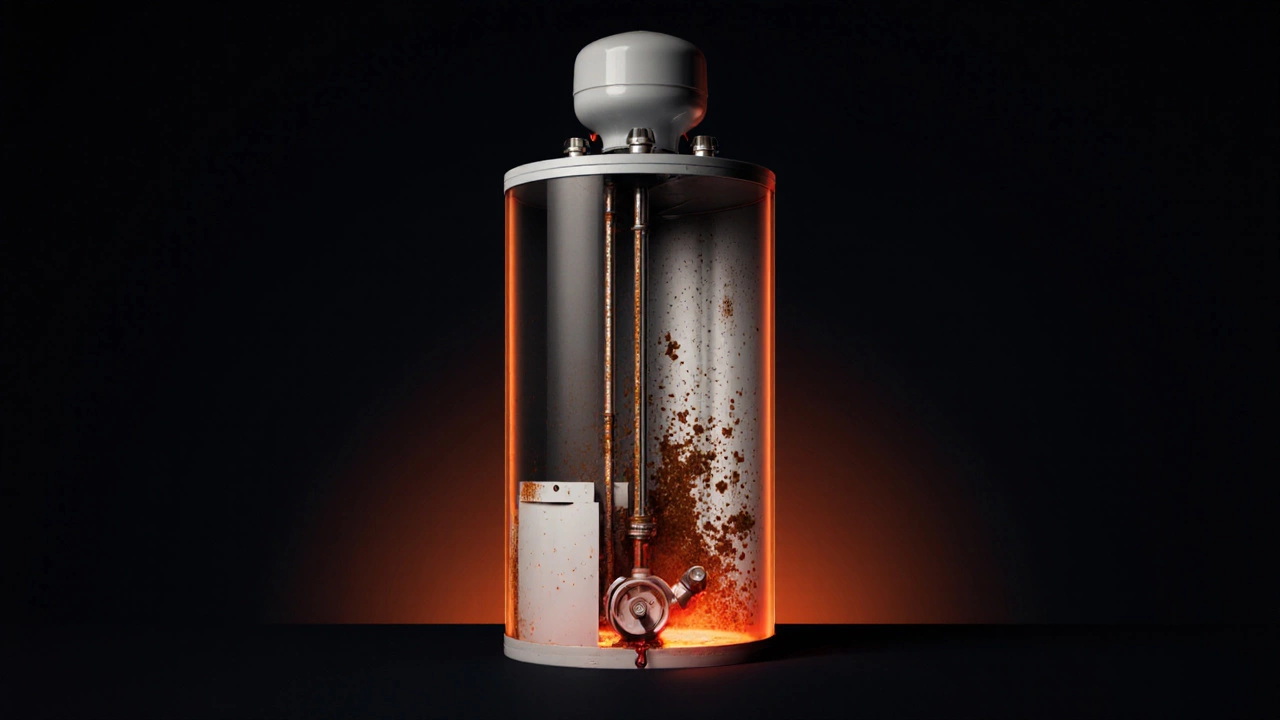
Prevention Is Cheaper Than Repair
The best way to avoid a sudden breakdown is to maintain your heater. Do this every year:
- Drain 1-2 gallons from the bottom valve to flush out sediment.
- Check the anode rod and replace it if it’s worn down.
- Test the pressure relief valve by lifting the lever. Water should flow out. If it doesn’t, replace the valve.
- Set the temperature to 120°F (49°C). Higher settings waste energy and speed up corrosion.
- Keep the area around the heater clean and dry.
These simple steps can extend your heater’s life by 5-10 years. Most manufacturers say 8-12 years, but with care, 15-20 is common.
When to Replace Instead of Repair
Here’s a quick rule: if the repair cost is more than half the price of a new unit, walk away. A new electric water heater in BC costs $800-$1,500 installed. A gas one runs $1,200-$2,000. If your heater is 8+ years old and needs a $400 repair, just buy a new one.
Modern heaters are more efficient. A new ENERGY STAR model can cut your water heating bill by 20-30%. Plus, you’ll get a 10-year warranty instead of a 1-year fix. In the long run, replacement almost always saves money.
Why is my hot water heater making noise?
Rumbling or popping sounds usually mean sediment has built up at the bottom of the tank. When water heats, it gets trapped under the sludge and boils, creating noise. Drain the tank to flush it out. If the noise continues after cleaning, the tank may be corroding internally and needs replacement.
Can a water heater explode?
It’s extremely rare, but possible if the temperature and pressure relief valve fails and the tank overheats. Modern heaters have multiple safety features, including thermostats, pressure valves, and shut-off switches. Regular maintenance prevents this. Never disable the relief valve or set the temperature above 140°F.
Why is my water heater leaking from the bottom?
Leaking from the bottom usually means the tank is corroded. This isn’t a fixable issue-it’s the tank failing. If your heater is over 8 years old, it’s time to replace it. If it’s newer, check the drain valve or connections first. A loose valve can be tightened, but tank corrosion cannot.
Does turning off the water heater save money?
If you’re away for more than a few days, yes. But turning it off daily doesn’t save much. Water heaters lose heat slowly, and reheating uses just as much energy as keeping it warm. For short absences, set the thermostat to 120°F. For long trips, turn it off. Consider a timer or smart thermostat for better control.
How long should a water heater last?
Most electric and gas water heaters last 8 to 12 years. With regular maintenance-especially anode rod replacement and sediment flushing-they can last 15 to 20 years. Tankless models last longer, up to 25 years, but cost more upfront. Age is the biggest predictor of failure.
Next Steps
If you’re reading this because your water heater just stopped working, start with the easy checks: power, thermostat, and pilot light. Then drain a little water to see if sediment is the issue. If you’re not comfortable with any of these steps, call a local plumber. Don’t wait until you’re standing in a flooded basement.
And if your heater is older than 10 years? Start looking at replacements now. The best time to replace a water heater is before it fails-not after.
